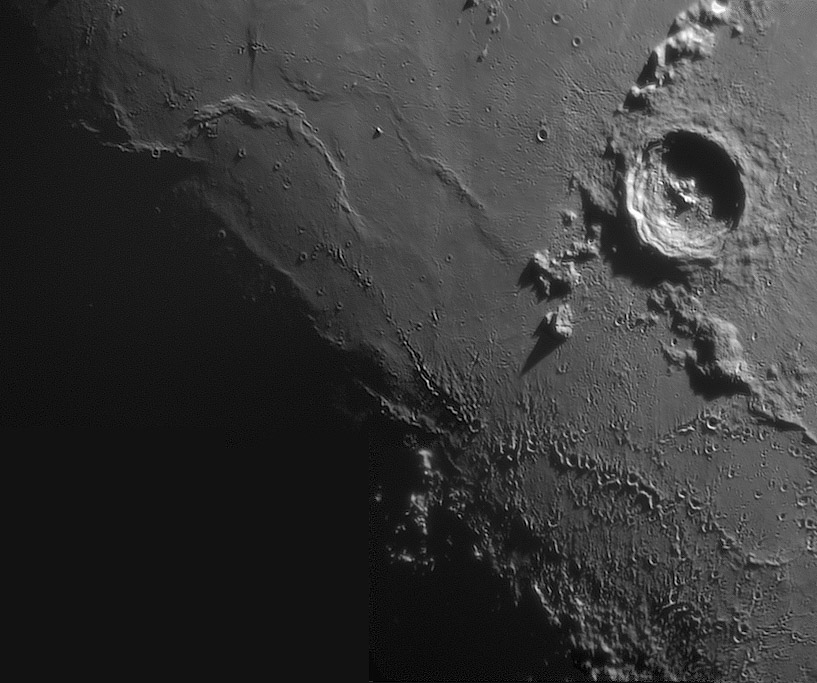
image by Stefan Lammel, Uxbridge, England
Big craters grab attention, but don’t overlook the small ones which provide information relating to sequences of events and processes. Stefan’s high resolution, near terminator view of the area southwest of Eratosthenes presents a study of secondary craters. Those from Copernicus dominate the bottom right of the image, illustrating a number of common and unusual characteristics of secondaries. From Lunar Orbiter images, scientists recognized the distinctive herringbone pattern of V-shaped ejecta ridges extending from individual secondaries. Commonly, these craters are in radial lines so the ridges overlap. The arc of secondaries at the bottom middle have always seemed strange because they are not radial to Copernicus - the rocky clots that formed them must have been ejected as a flap of material. The long, slightly curved tail of secondaries at center left must also have been ejected as a ribbon of ejecta, with the smaller pieces being thrown further than the bigger ones. A very peculiar feature is the ~30 km long patch of smooth mare material just west of the unnamed mountain below Erathosthenes. This is so lightly cratered by secondaries - and the area immediately to the left has a lot - that at first glance it seems like it must be lavas younger than Copernicus. But the herringbone ridges from the line of secondaries at its bottom edge ride over the smooth lavas so they must be older than Copernicus. While in this area note that Copernicus secondaries are on top of the southern glacis (outer rim) of Eratosthenes, proving that it too is older than Copernicus. And Eratosthenes is younger than the lavas of Mare Imbrium for its secondaries extend out onto the mare about one crater diameter. Notice the long thin line of secondaries at the upper left that extend twice as far as other Eratosthenes secondaries. Why? Who knows.
Technical Details:
27 March, 2007, 20:20UT. 10in f4.8 Newtonian, DMK 21AF04, 5x PowerMate, red filter, Registax v4, PSE 5.
Related Links:
Rükl charts 21 & 32
Stefan’s website
COMMENTS?
Click on this icon File:PostIcon.jpg at the upper right to post a comment.



